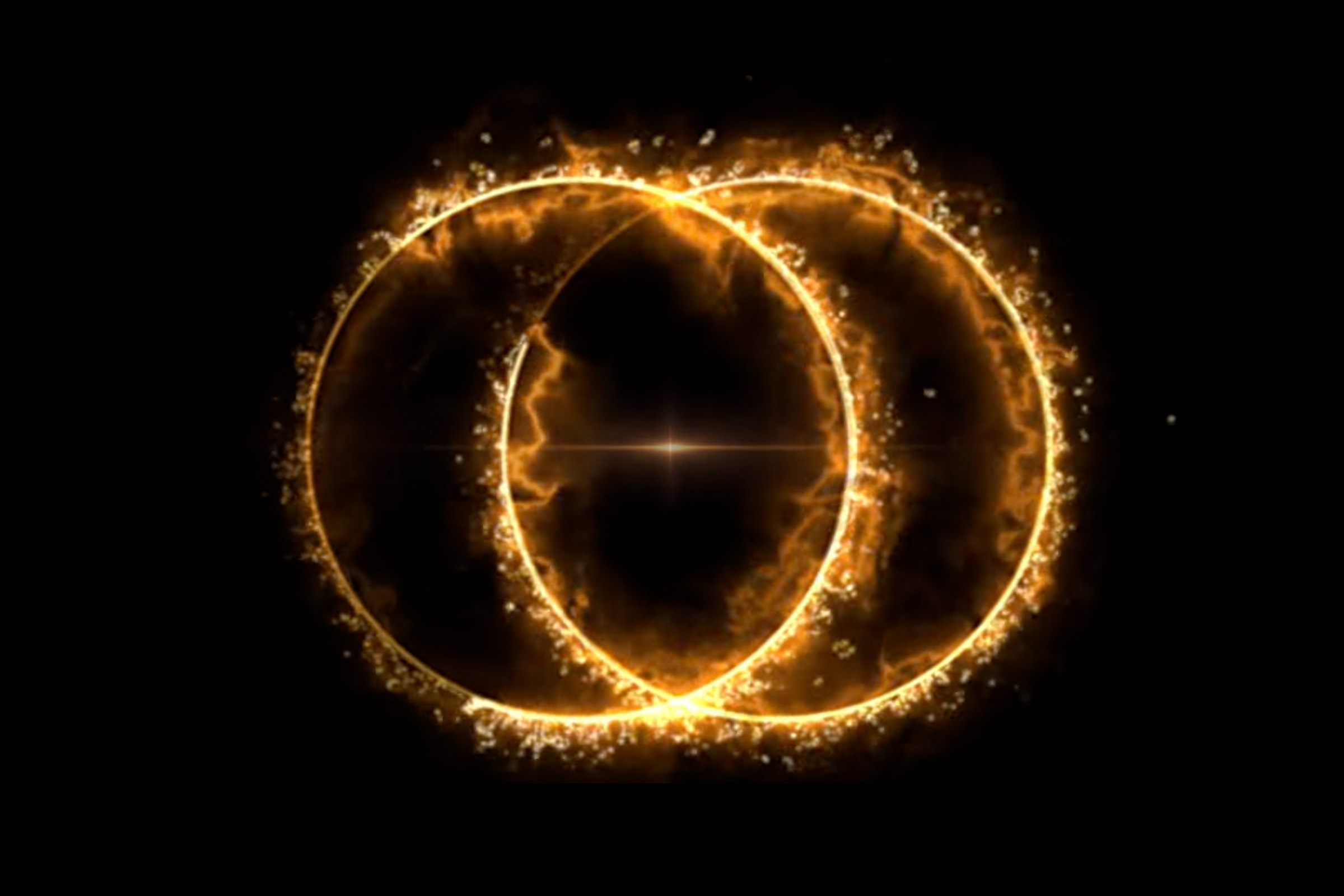Science
Astronomers Discover Enormous Twin Cosmic Rings 7.5 Billion Light Years Away

Astronomers have made a remarkable discovery, identifying a colossal double-ring structure located approximately 7.5 billion light years from Earth. This extraordinary formation, known as an Odd Radio Circle (ORC), spans hundreds of thousands of light years and emits a stunning glow in radio wavelengths. The findings have been detailed in a study published in the Monthly Notices of the Royal Astronomical Society.
The newly observed ORC, named after the galaxy it resides in, RAD J131346.9+500320, is only the second instance of an ORC featuring two rings. Since the first ORC was documented just six years ago, only a handful of these enigmatic cosmic structures have been discovered. Researchers believe ORCs are composed of magnetized plasma, making them detectable solely through radio light.
Understanding the Origins of ORCs
Despite their impressive size—often dozens of times the diameter of the Milky Way—scientists remain puzzled about the origins of these structures. Ananda Hota, the study’s lead author and assistant professor at the University of Mumbai, remarked, “ORCs are among the most bizarre and beautiful cosmic structures we’ve ever seen — and they may hold vital clues about how galaxies and black holes co-evolve, hand-in-hand.”
The location of this ORC within a densely populated galaxy cluster suggests that its formation may be influenced by interactions with surrounding plasma and the energetic jets produced by supermassive black holes at the centers of galaxies. It is hypothesized that the jet creates magnetized plasma clouds, which could be re-energized by massive explosions occurring near the galactic center. This process could explain the bright appearance of the plasma clouds, making them glow anew as radio rings.
Co-author Pratik Dabhade, an assistant professor in the astrophysics division at the National Centre for Nuclear Research in Warsaw, Poland, commented, “These discoveries show that ORCs and radio rings are not isolated curiosities — they are part of a broader family of exotic plasma structures shaped by black hole jets, winds, and their environments.”
Exploring a Hidden Universe
The discovery of ORCs is part of a larger initiative to explore what astronomers are calling a “low-surface brightness universe.” This term refers to a collection of astronomical objects previously hidden from view, now being revealed by advanced radio telescopes. Among other findings in this previously obscured realm are a perfectly round supernova remnant and Wolf-Rayet stars, which are known for their intense luminosity and short lifespans.
These findings underscore the ongoing evolution of our understanding of the cosmos. As researchers continue to investigate these fascinating structures, they may unlock crucial insights into the fundamental processes governing galaxies and the supermassive black holes at their cores. The excitement surrounding these discoveries highlights the dynamic nature of astrophysics and the importance of continued exploration in the field.
-

 Science4 weeks ago
Science4 weeks agoALMA Discovers Companion Orbiting Giant Red Star π 1 Gruis
-

 Top Stories2 months ago
Top Stories2 months agoNew ‘Star Trek: Voyager’ Game Demo Released, Players Test Limits
-

 Politics2 months ago
Politics2 months agoSEVENTEEN’s Mingyu Faces Backlash Over Alcohol Incident at Concert
-

 World2 months ago
World2 months agoGlobal Air Forces Ranked by Annual Defense Budgets in 2025
-

 World2 months ago
World2 months agoElectrification Challenges Demand Advanced Multiphysics Modeling
-

 World2 months ago
World2 months agoMass Production of F-35 Fighter Jet Drives Down Costs
-

 Business2 months ago
Business2 months agoGold Investment Surge: Top Mutual Funds and ETF Alternatives
-

 Science2 months ago
Science2 months agoTime Crystals Revolutionize Quantum Computing Potential
-

 Top Stories2 months ago
Top Stories2 months agoDirecTV to Launch AI-Driven Ads with User Likenesses in 2026
-

 Entertainment2 months ago
Entertainment2 months agoFreeport Art Gallery Transforms Waste into Creative Masterpieces
-

 Health2 months ago
Health2 months agoGavin Newsom Critiques Trump’s Health and National Guard Plans
-

 Business2 months ago
Business2 months agoUS Government Denies Coal Lease Bid, Impacting Industry Revival Efforts









